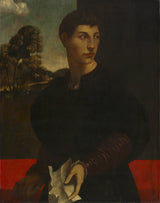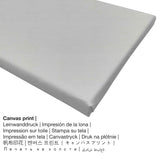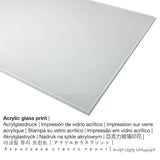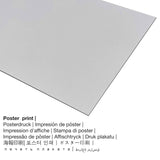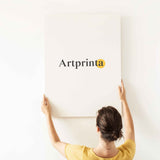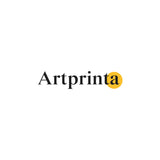onye na-eso Dosso Dossi, 1530 - Eserese nwoke na-eto eto - mbipụta nka mara mma
Ụtụ gụnyere. Mbupu gbakọrọ na ndenye ọpụpụ.
Ozi ngwaahịa nka
a nka ochie Onye omenkà sere ihe nka onye na-eso Dosso Dossi in 1530. The version of the artwork has the size: Nhazi: 128,2 x 102,2 x 11,5 cm (50 1/2 x 40 1/4 x 4 1/2 na); Edebereghị: 97,2 x 77,5 cm (38 1/4 x 30 1/2 na) wee mepụta ya na Usoro of mmanụ na ọla edo n'elu osisi. E wezụga nke ahụ, artwork Nleta akụkụ nke collection of Velọ ihe ngosi nka nke Cleveland emi odude ke Cleveland, Ohio, United States nke America. Site n'ikike nke - Velọ ihe ngosi nka nke Cleveland (ikike ngalaba ọha). Furthermore, the artpiece has the creditline: Holden Collection. In addition to this, the alignment of the digital reproduction is Eserese ma nwee oke onyonyo nke 3: 4, nke pụtara na ogologo 25% dị mkpụmkpụ karịa obosara.
Họrọ ngwa ngwaahịa masịrị gị
Anyị na-enye ihe dị iche iche dị iche iche na nha maka ngwaahịa ọ bụla. Anyị na-ahapụ gị ka ịhọrọ n'ime ụdị ndị a:
- Akwụkwọ mmado ebipụtara (ihe kwaaji): Our poster is a printed canvas with a fine surface texture. Please note, that depending on the size of the poster we add a white margin of approximately 2 - 6cm around the painting, which facilitates the framing with a custom frame.
- Bipụta na iko acrylic na-egbuke egbuke (nke nwere ezigbo mkpuchi iko): A glossy print on acrylic glass, often referenced as a print on plexiglass, will transform the original work of art into gorgeous décor. Your artwork is custom-made with state-of-the-art UV direct print technology. The image effect of this are rich and stunning color tones. The major benefit of an acrylic glass print is that contrasts as well as small details become more visible due to the delicate gradation of the picture.
- Mbipụta kanvas: A printed canvas, which shall not be mistaken with a canvas painting, is a digital replica applied directly on canvas material. It produces a plastic look of three dimensionality. Hanging your canvas print: The advantage of canvas prints is that they are relatively low in weight, which means that it is easy to hang the Canvas print without the support of extra wall-mounts. Hence, canvas prints are suitable for any type of wall.
- Aluminom dibond (ọkpụkpụ ọla): An Aluminium Dibond print is a material with an impressive depth effect. A direct Aluminium Dibond Print is your ideal start to the sophisticated world of fine art reproductions with aluminum. The white & bright parts of the work of art shine with a silk gloss but without glow. The colors of the print are vivid and luminous, details of the print are very clear.
Ozi dị mkpa: We try what we can to describe the art products as exact as possible and to display them visually in our shop. Still, the colors of the print products, as well as the printing can diverge marginally from the image on your screen. Depending on your settings of your screen and the quality of the surface, not all colors will be printed as exactly as the digital version on this website. Because our art prints are printed and processed by hand, there might as well be minor differences in the exact position and the size of the motif.
Banyere ngwaahịa
| Nkewa edemede: | mmepụta nka |
| Mmeputakwa: | dijitalụ mmeputakwa |
| Usoro mmepụta: | Mbipụta UV ozugbo |
| Mmalite ngwaahịa: | emere na Germany |
| Ụdị ngwaahịa: | a na-achọ |
| A na-atụ aro iji ngwaahịa eme ihe: | ụlọ mmepụta ihe nka, ihe ndozi mgbidi |
| Nhazi: | usoro eserese |
| Oke akụkụ onyonyo: | ( Ogologo: obosara) 3: 4 |
| Oke akụkụ pụtara: | ogologo bụ 25% mkpụmkpụ karịa obosara |
| Akụrụngwa ị nwere ike ịhọrọ: | acrylic glass print (nwere ezigbo mkpuchi iko), mbipụta akwụkwọ mmado (akwụkwọ kwaaji), mbipụta kanvas, mbipụta ọla (aluminium dibond) |
| Mbipụta kanvas (akwa akwa n'elu etiti ihe ndọtị) ụdị nha dị iche iche: | 30x40cm - 12x16", 60x80cm - 24x31", 90x120cm - 35x47", 120x160cm - 47x63" |
| Mbipụta iko acrylic (nwere ezigbo mkpuchi iko) dị iche iche: | 30x40cm - 12x16", 60x80cm - 24x31", 90x120cm - 35x47", 120x160cm - 47x63" |
| Mpempe akwụkwọ mmado (akwụkwọ kwaaji) nha: | 30x40cm - 12x16", 60x80cm - 24x31", 90x120cm - 35x47" |
| Mpempe akwụkwọ Dibony (ihe alumnium) nha dị iche iche: | 30x40cm - 12x16", 60x80cm - 24x31", 90x120cm - 35x47" |
| Igwe onyonyo: | oyiri nka na-enweghị isi |
Ozi nka ahaziri
| Aha nke eserese ahụ: | "Ihe osise nke Nwa okorobịa" |
| Nhazi nka: | sere |
| Okwu mkpokọta: | nka ochie |
| Time: | 16th narị afọ |
| Afọ okike: | 1530 |
| Afọ nka: | ihe dị ka afọ 490 |
| Ihe osise izizi: | mmanụ na ọla edo n'elu osisi |
| Nha nke ihe nka izizi: | Nhazi: 128,2 x 102,2 x 11,5 cm (50 1/2 x 40 1/4 x 4 1/2 na); Edebereghị: 97,2 x 77,5 cm (38 1/4 x 30 1/2 na) |
| Egosiputara na: | Velọ ihe ngosi nka nke Cleveland |
| Ebe ngosi nka: | Cleveland, Ohio, United States nke America |
| Ibe weebụ: | Velọ ihe ngosi nka nke Cleveland |
| Ụdị ikike nka: | ngalaba ọha |
| Site n'aka: | Velọ ihe ngosi nka nke Cleveland |
| Ebe E Si Nweta: | Nchịkọta Holden |
Tebụl ozi omenkà
| aha: | onye na-eso Dosso Dossi |
| Obodo onye nka: | Italian |
| Ọrụ: | onye na-ese ihe |
| Country: | Italy |
| nhazi ọkwa: | nna ukwu ochie |
| Ndụ: | 51 afọ |
| Afọ ọmụmụ: | 1490 |
| Nwuru: | 1541 |
© Nwebiisinka nke, www.artprinta.com (Artprinta)
Nkọwa ndị ọzọ sitere na webụsaịtị ihe ngosi nka (© - The Cleveland Museum of Art - www.clevelandart.org)
Like other paintings from the Dossi workshop, this work conveys the sitter's social status and self-confidence. He holds a crumpled letter written in Italian. The words Asto, meaning "ship mast," and mare, meaning "sea," suggest that trade was a topic of this letter. References to anatomy and the word bella imply a discussion of the magnificence of human anatomy, an interest that spread rapidly during the Renaissance. The letter likewise communicates the young man's considerable education. This work was formerly called Portrait of Giuliano de Medici; however, the sitter's lack of resemblance to Giuliano caused art historians to discount this argument. Portrait of a Young Man was earlier attributed to Dosso's brother, Battista, before recently being considered a work by Dosso or a member of his workshop. As first suggested by Roberto Longhi, Portrait of a Young Man is now considered likely to be a work of an unidentified follower of Dossi from Friuli, Italy. The Friulian follower worked from 1510 until after 1530 and had connections to Dossi's hometown of Ferrara, accounting for this work's resemblance to Dossi's style. The dark outlines and large forms of the work are of a later style than Dossi's, suggesting that the artist was a follower rather than Dossi himself.

